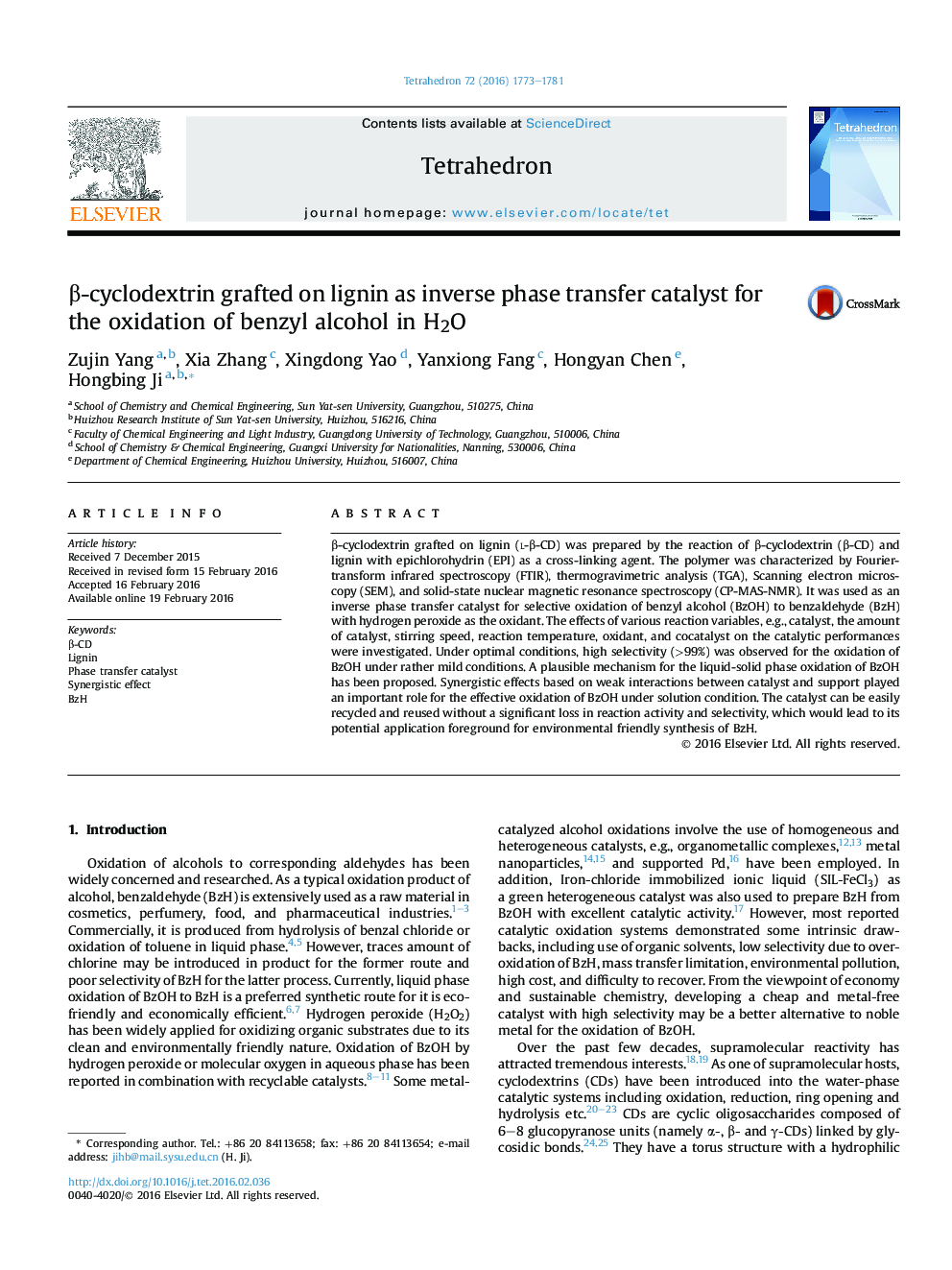| Article ID | Journal | Published Year | Pages | File Type |
|---|---|---|---|---|
| 5213992 | Tetrahedron | 2016 | 9 Pages |
β-cyclodextrin grafted on lignin (l-β-CD) was prepared by the reaction of β-cyclodextrin (β-CD) and lignin with epichlorohydrin (EPI) as a cross-linking agent. The polymer was characterized by Fourier-transform infrared spectroscopy (FTIR), thermogravimetric analysis (TGA), Scanning electron microscopy (SEM), and solid-state nuclear magnetic resonance spectroscopy (CP-MAS-NMR). It was used as an inverse phase transfer catalyst for selective oxidation of benzyl alcohol (BzOH) to benzaldehyde (BzH) with hydrogen peroxide as the oxidant. The effects of various reaction variables, e.g., catalyst, the amount of catalyst, stirring speed, reaction temperature, oxidant, and cocatalyst on the catalytic performances were investigated. Under optimal conditions, high selectivity (>99%) was observed for the oxidation of BzOH under rather mild conditions. A plausible mechanism for the liquid-solid phase oxidation of BzOH has been proposed. Synergistic effects based on weak interactions between catalyst and support played an important role for the effective oxidation of BzOH under solution condition. The catalyst can be easily recycled and reused without a significant loss in reaction activity and selectivity, which would lead to its potential application foreground for environmental friendly synthesis of BzH.
Graphical abstractDownload full-size imageβ-cyclodextrin grafted on lignin (l-β-CD) has been used as a metal-free catalyst for selective oxidation of benzyl alcohol to benzaldehyde and excellent catalytic performances based on synergistic effects of hydrogen bonding between catalyst and support were achieved.
